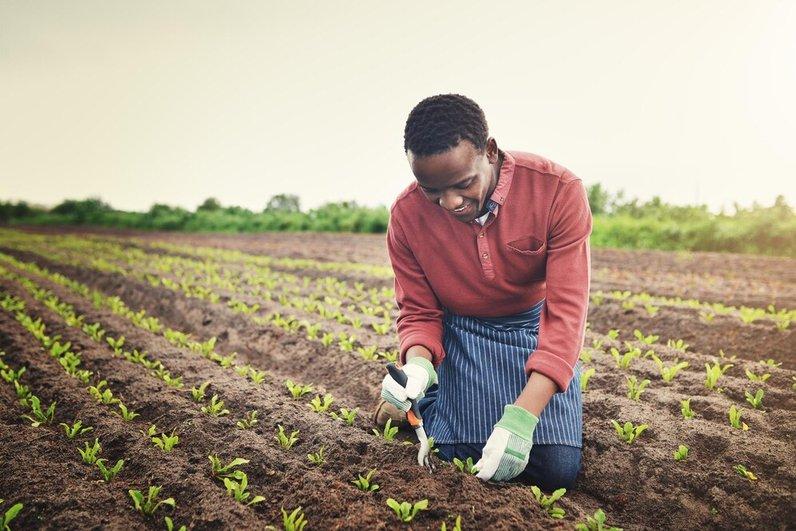Home Harvest - Navigating Uganda's Second Planting Season Amid Climate Change: Secure Your Harvest with Home Harvest
As we approach mid-July 2025, Uganda's farmers are once again turning their attention to the second planting season, a critical period that runs from August to September.
Navigating Uganda's Second Planting Season Amid Climate Change: Secure Your Harvest with Home Harvest
As we approach mid-July 2025, Uganda's farmers are once again turning their attention to the second planting season, a critical period that runs from August to September, capitalizing on the short rains through November. However, in an era marked by accelerating climate change, this season brings not just opportunity but also unprecedented challenges. Erratic rainfall patterns, prolonged droughts, and extreme weather events are reshaping our agricultural landscape, making adaptive strategies essential for sustainable success. At Home Harvest, we're committed to supporting farmers through these shifts with high-quality, climate-resilient inputs that empower you to thrive despite the uncertainties.
The Evolving Climate and Its Impact on Uganda's Planting Seasons
Uganda's agriculture has long relied on two primary rainy seasons: the "long rains" from March to May and the "short rains" from September to November, enabling biannual planting cycles for staples like maize, beans, and soybeans. Traditionally, the second season begins with sowing in August-September, leading to harvests in December-January. Yet, climate change is disrupting these patterns profoundly. Seasons are becoming more variable, with shorter or longer rainy periods, harsher droughts, and increased flooding. Farmers now face uncertainty about when to plant, as disrupted rainy seasons lead to delayed or failed germination.
Rising temperatures are another pressing concern, projected to stress crops and alter growing seasons by reducing water availability and increasing evaporation rates.climateknowledgeportal.worldbank.org In rain-fed systems, which dominate Uganda with less than 3% of cropland irrigated, subsistence farmers are particularly vulnerable to these changes.mdpi.com Recent studies indicate that 70-97% of farming households could be adversely affected, with the southwest region hit hardest by declining productivity. Prolonged dry spells exacerbate pest and disease outbreaks, while extreme events like floods and landslides—intensified by deforestation and heavy rains—threaten soil stability and crop viability.
In sub-humid tropics, temperatures are expected to rise while rainfall decreases over the next decades, potentially lowering maize yields and overall productivity.sciencedirect.comafjare.org These shifts not only jeopardize food security but also livelihoods, as sustained climate anomalies make it harder for farmers to maintain resilient operations.iaes.cgiar.orgforesight4food.net As the Ministry of Agriculture advises, aligning with national goals like the Malabo Declaration requires proactive adaptation to end hunger by 2025.
Why Adapt Now? Building Resilience for a Changing Climate
The dry interlude of July-August is your strategic window to prepare. Early action allows you to select climate-smart inputs that mitigate risks: drought-resistant seeds for unreliable rains, efficient fertilizers to optimize soil health amid higher temperatures, and eco-friendly pesticides to combat rising pest pressures. By investing in modern practices like crop diversification, integrated pest management, and water-efficient techniques, you can enhance yields, reduce losses, and foster environmental sustainability.
Don't let climate variability catch you off guard — stock up now to avoid shortages during peak demand. Home Harvest's products are designed with Uganda's evolving climate in mind, helping you adapt to erratic weather while boosting long-term farm resilience. Whether exploring high-value crops like avocados or groundnuts, our inputs ensure you're equipped for success in an unpredictable environment.
Partner with Home Harvest for Climate-Resilient Farming
At Home Harvest, we understand the frontline impacts of climate change on Ugandan agriculture. That's why our premium agro-inputs—certified seeds, targeted fertilizers, and innovative tools — are tailored to promote resilience and productivity. In Uganda and East Africa, farmers trust us to deliver quality that withstands droughts, floods, and temperature spikes. Visit our agro-shops nationwide or our offices to consult with experts and secure the best for your second season. Empower your farm today and contribute to a sustainable future. Let's turn climate challenges into opportunities for growth.
Get In Touch With Us
Ready to fortify your fields against climate change? Contact Home Harvest today!
Visit Our Locations
- Head Office: Block 101, Plot 942, Namugongo-Seeta Rd, Goma
- Retail Shop: Kings Way Plaza Shop No. G9, Container Village, Nakivubo Rd
- Kotido Branch: Kotido municipality, Kotido district, Longoromit road, Adevento house
Call Us
- +256 392 236482
- +256 704 141827
Available during business hours.
Email Us
We respond within 24 hours.
Business Hours
- Monday - Friday: 8:00 AM - 6:00 PM
- Saturday: 9:00 AM - 3:00 PM
- Sunday: Closed
Join the ranks of resilient farmers choosing Home Harvest. Together, we'll weather the changes and harvest abundance!
#HomeHarvest #UgandaPlantingSeason #ClimateResilientFarming #SustainableAgriculture

No comments yet. Login to start a new discussion Start a new discussion